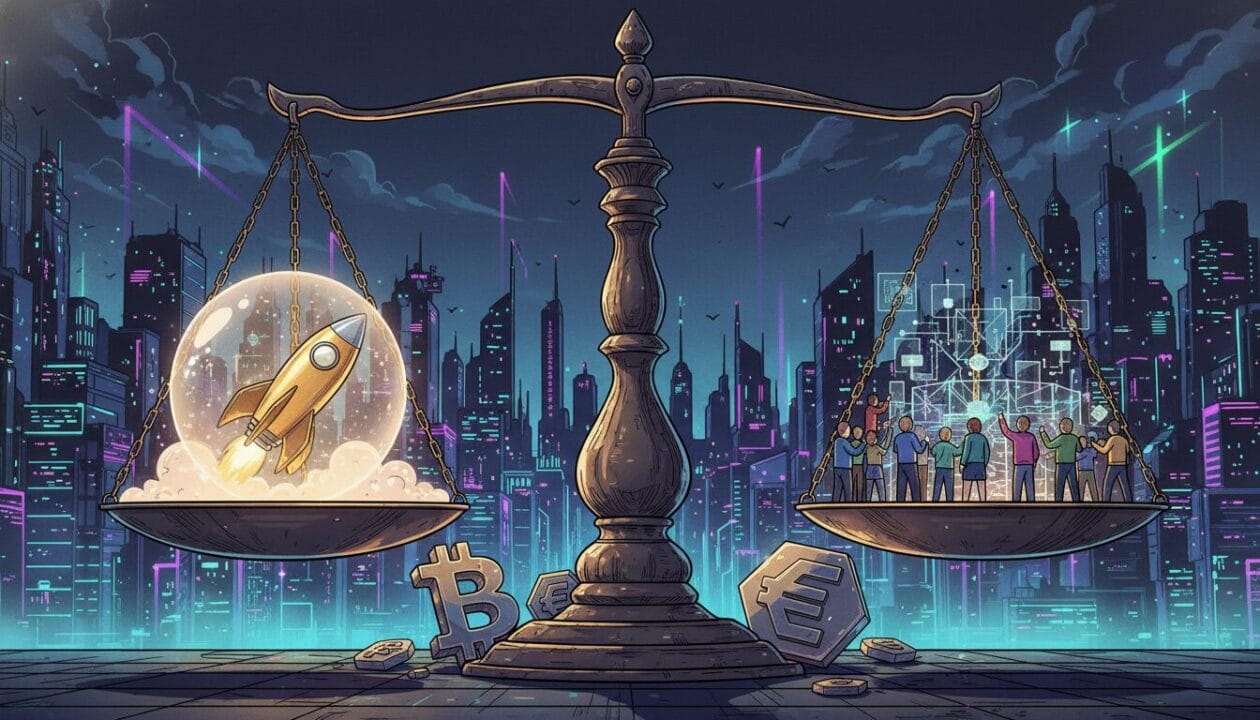The Myth of the Fair Launch: Redefining Fairness in Crypto

Bitcoin: The Imperfect Blueprint
Bitcoin is often held up as the original fair launch, primarily because its creator never moved their coins, preventing an insider cash-out from distorting the initial distribution. For all its flaws, Bitcoin’s economic model was tied directly to its product. Each block represented an incorruptible unit of record, and miners were rewarded for producing them. However, scarcity transformed Bitcoin into digital gold, undermining its intended use as peer-to-peer cash. The fixed supply guaranteed that latecomers could never achieve the same standing as early miners, effectively embedding wealth asymmetry into the network’s DNA. The halving mechanism only deepened this divide, creating a system where miners receive half the reward every cycle. This structure proves the system itself never treated all participants equally over time.
The Illusion of DeFi’s Fair Launch Summer
A decade later, the concept of a fair launch became fashionable again during the 2020 “DeFi Summer.” Projects like Yearn Finance proudly announced their tokens were fairly distributed, allowing anyone to earn governance rights by providing liquidity. The problem was that providing liquidity wasn’t a universal activity; it was a highly financialized business accessible only to a select few. Even worse, these so-called fair launches were highly vulnerable to “vampire attacks.” SushiSwap forked Uniswap, and PancakeSwap cloned Sushi, with each new fork siphoning liquidity by promising higher yields. In this cycle, the early insiders of each iteration were rewarded repeatedly. Fair launch, as defined in the Decentralized Finance (DeFi) era, was neither fair nor defensible, creating a race of copycat projects where fairness meant little more than avoiding an Initial Coin Offering (ICO).
The Presale Era: Redefining “Fair” for Insiders
The industry has since shifted its definition once again. Ethereum’s 2015 ICO raised over $18 million by selling 72 million ETH—more than half of the current circulating supply—before a single block was mined. Projects like Solana, Aptos, and Sui followed this pattern, raising hundreds of millions and allocating massive percentages of their tokens to insiders. After the Token Generation Event (TGE), these allocations aren’t counted as inflation, yet they function as a delayed form of it, entering the circulating supply only after vesting periods end. In this model, new users aren’t just buying into a network; they are buying out the early backers. The term “fair launch” has been diluted to a simple threshold where a 5% insider allocation is now considered acceptable. Whether it’s 5% or 35%, the principle has been fundamentally compromised.
What a True Fair Launch Actually Means
A genuine fair launch was never about percentages on a capitalization table. It’s about an alignment of values and whether the smallest unit of contribution to a network is rewarded equally, whether you joined on day one or ten years later. In Bitcoin, that unit is a block. In other systems, it could be a verified human, computing power, or bandwidth. The test is simple: does the network treat all contributors as equals in perpetuity? This standard reveals that even Bitcoin’s launch wasn’t truly fair, as capital-intensive mining now centralizes power and excludes independent participants. By this measure, almost every project today fails. Presales and foundation treasuries create deferred inflation, while liquidity mining restricts participation to capital-rich specialists. Their launch schedules hard-code exit liquidity for insiders, serving balance sheets rather than a community. For a true fair launch, the protocol must deliver genuine utility independent of token price. Founders and developers should profit from building valuable services on top of the network, not from the token’s appreciation. When a protocol’s survival depends on token demand, fairness is already lost.
Ultimately, a fair launch is the only sustainable foundation for a crypto network. A system that privileges insiders will always fracture, as someone can easily fork the code and promise a slightly better deal. But when fairness is absolute and product value is the main driver, there is nothing left to fork. Communities stay because they are treated as equals, not because of speculative incentives. A fair launch is the social contract of crypto—a commitment that no matter when you arrive, you stand on equal ground with everyone else.











